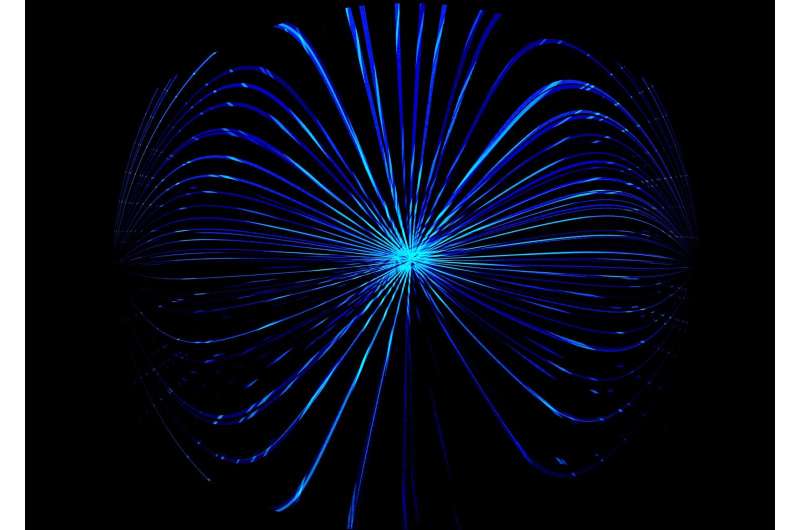Accelerating the pace of research
Free to use for anyone who has access to the internet, the new system fulfills the CHIME/FRB project team's goal of making every FRB detected by CHIME available for other telescopes to target with as little delay as possible. The development is a key step towards bringing the resources of the international research community to bear on the data the CHIME/FRB project is generating.
"Since CHIME/FRB began operating in 2018, it has been like drinking from a fire hose in terms of the amount of data coming through," says Emily Petroff, a postdoctoral researcher in the Department of Physics at McGill who played a key role in refining the alert system ahead of its public release. "We simply cannot extract all the science from this; we need the world's help."
Tuning in to CHIME
The developers of the CHIME/FRB VOEvent Service say that "anyone who has access to a telescope and can reliably point it at a Northern sky location" will be able to make use of the alerts to make follow-up observations of the FRBs detected by CHIME.
"We have prepared tutorials and substantial documentation for new and veteran users of VOEvents to get started quickly," Zwaniga says. "We are inviting comments and questions regarding VOEvents from the community on our public-facing CHIME/FRB community GitHub page."
About CHIME
Located in the mountains of British Columbia's Okanagan Valley at the NRC's Dominion Radio Astrophysical Observatory near Penticton, the Canadian Hydrogen Intensity Mapping Experiment (CHIME) is a cylindrical parabolic radio telescope, shaped something like a snowboard half-pipe. CHIME has no moving parts, instead relying on the Earth's rotation to sample radio signals from a broad swath of the Northern sky each day. CHIME was originally designed to detect radio waves from neutral hydrogen gas in the early Universe, but today the instrument is being used for several other scientific objectives beyond its original design, including the search for FRBs. With its huge field of view and broad frequency coverage, CHIME is a near-ideal instrument for finding and studying these bursts.
About the CHIME Fast Radio Burst collaboration
CHIME/FRB is a collaboration of over 50 scientists led by the University of British Columbia, McGill University, the University of Toronto, the Perimeter Institute for Theoretical Physics, and the National Research Council of Canada (NRC).
About fast radio bursts
Fast radio bursts (FRBs) are extremely energetic pulses of radio waves that appear to originate from well beyond our galaxy, the Milky Way. Each burst lasts just a few milliseconds, and they occur all over the sky. While the cause of FRBs remains unknown, using telescopes sensitive to wavelengths other than radio—e.g. visible light, X-rays and gamma rays—to observe the locations from which FRBs emanate will likely enable scientists to narrow down the range of possible explanations. Data from CHIME, shared through the CHIME/FRB VOEvent Service, will allow these telescopes—many of which can only focus on a small area of the sky at a time—to be trained on FRB-emitting locations with greater speed and accuracy.
Explore further



